Fiddle Leaf Fig propagation is so easy, and almost fail proof! If you have been drooling over all the gorgeous photos of Fiddle Leaf Fig trees in beautifully designed interiors, why not try and propagate some for your home and to share as gifts with indoor plant lovers?
When I first tried to propagate Fiddle Leaf Fig in 2015, I tested two methods and had 100% success on all four stem cuttings! You won’t believe how big and beautiful they all look after 4 years! Check them out here for the one-year and four-year updates!
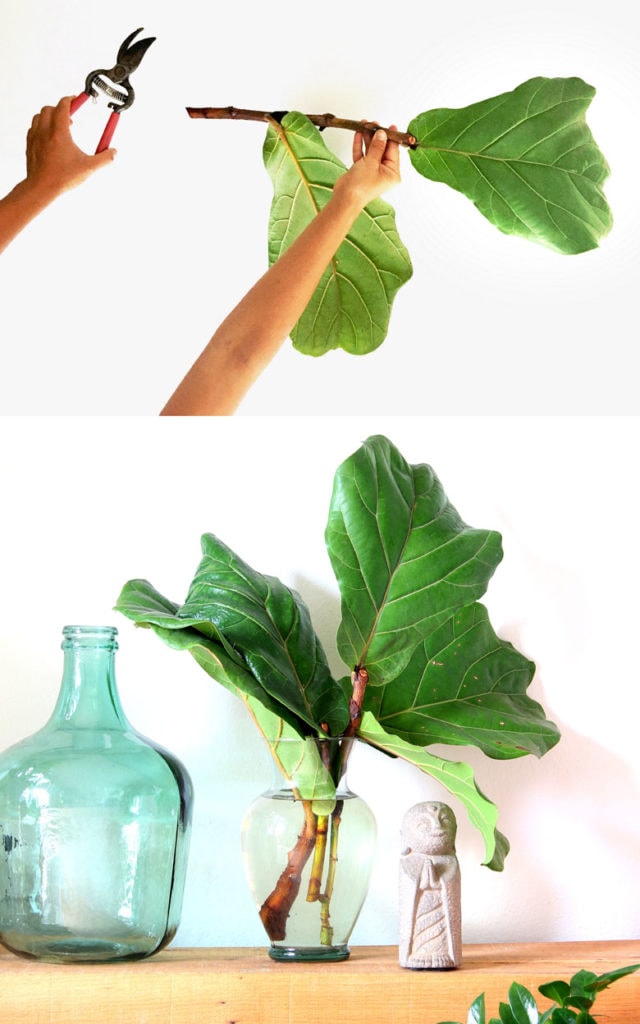
In this updated post I will share with you everything we have learned about how to propagate Fiddle Leaf Fig cuttings easily using two methods: rooting in water, and rooting in soil.
It all started when a friend told me she is pruning her huge Fiddle Leaf Fig tree, I just have to try and see if I could grow some from her trimmings!
Which leads to today’s tutorial- Fiddle Leaf Fig propagation made easy!
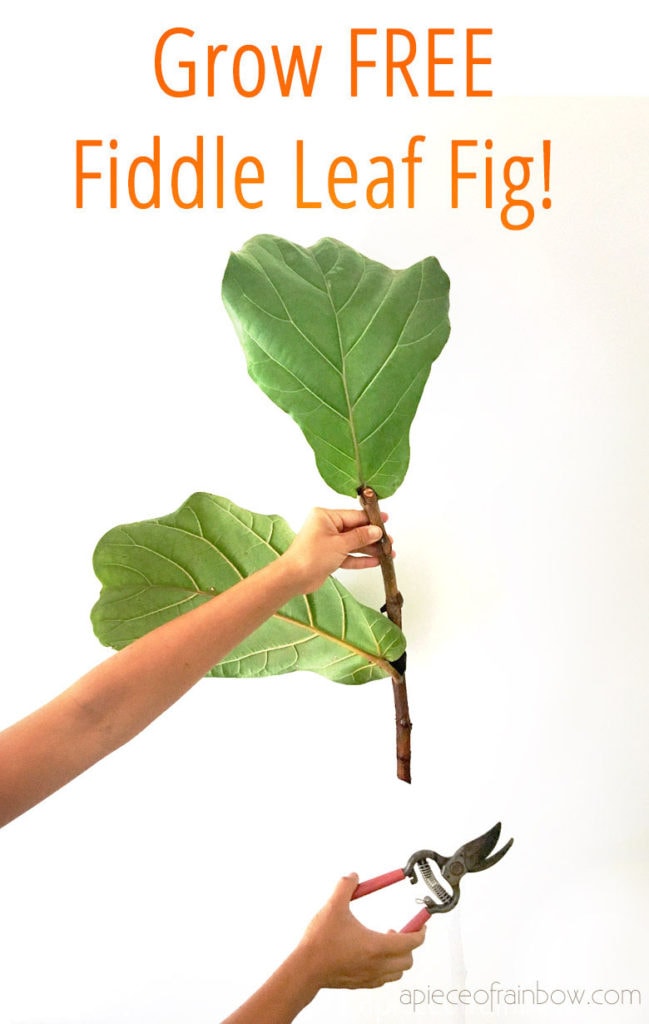
Step 1: how to prepare stem cuttings
( Some of the helpful resources are affiliate links. Full disclosure here. )
Successful Fiddle Leaf Fig propagation starts with good stem cuttings. First we need to understand what are nodes on stems. The nodes are where leaves and buds grow on stems. These are also where root tend to grow in propagation.
A good Fiddle Leaf Fig stem cutting is usually about 12″ to 18″ long, with 1-3 leaves, and at least 1-2 nodes where leaves are removed.

You can make several cuttings out of a longer branch. Removing excess leaves will reduce the stress on the cuttings to retain water. Do keep at least one leaf because it will feed the stem cutting through photosynthesis.
Fiddle Leaf Fig propagation method 1: root cuttings in water
I started with 4 stem cuttings and a leaf, because I was super curious to see if roots could grow from a single leaf! I place the base of 2 stem cuttings and 1 leaf in water, and planted the other 2 stem cuttings in moist potting soil.

Place the cuttings in a clean glass vase filled with water, and keep them in a warm and bright place out of direct sun.. I only changed the water when the water started to look cloudy, which happened only a couple of times. Use room temperature tap water and let the chlorine evaporate for a day before using.
This is the advantage of rooting in water- one can see the progress!

After 4 weeks, some little popcorn-like spots started to appear on the stem base of the cuttings in water.
After 6-8 weeks, roots are growing in the water, wow! There’s no need to change water during this time.
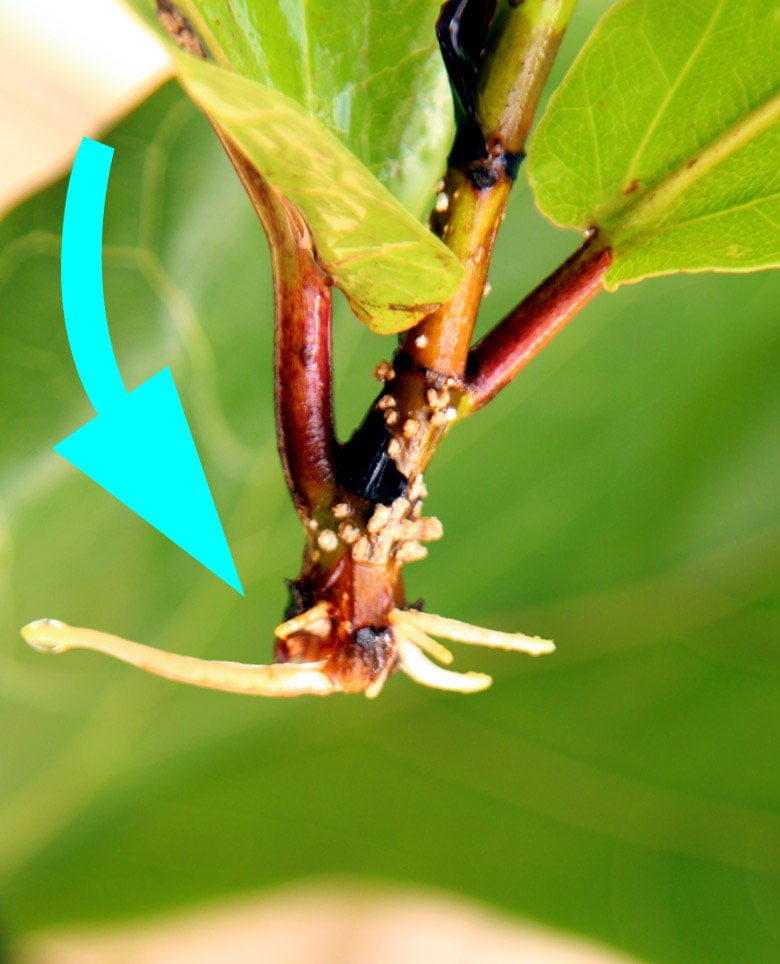
When the roots are about 1 to 2 inches long, you can plant the rooted Fiddle Leaf Fig cuttings in soil and watch them grow! Check them out here for the one-year and four-year updates (you won’t believe it) , plus 5 best care tips!
Fiddle Leaf Fig propagation method 2: grow cuttings in soil.
I did not use rooting hormone here because of the comparison tests, but I have found that it can really increase the success rate and speed up propagation in soil for all kinds of plants!
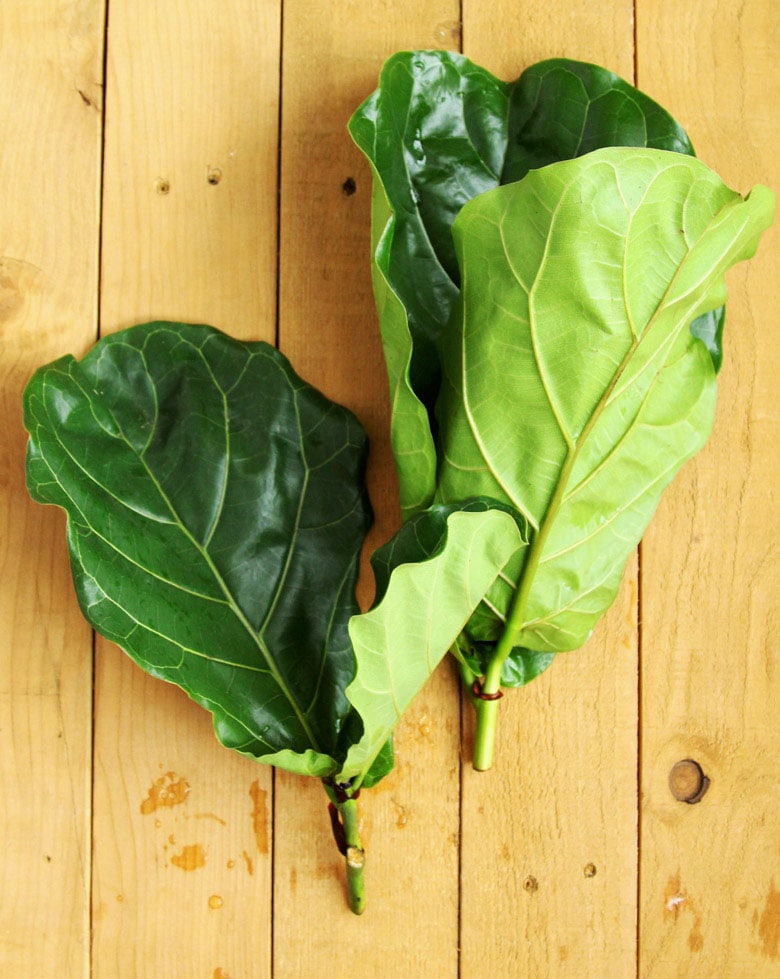
Because it is more challenging for cuttings to to absorb water in soil, I used a clear plastic bag to cover the cuttings planted in soil. Propping the bag with some branches will prevent water from sitting on the leaves and causing fungal disease.

Keep the soil moist but not too soggy. Put the pot in bright light, some morning or evening sun is OK.
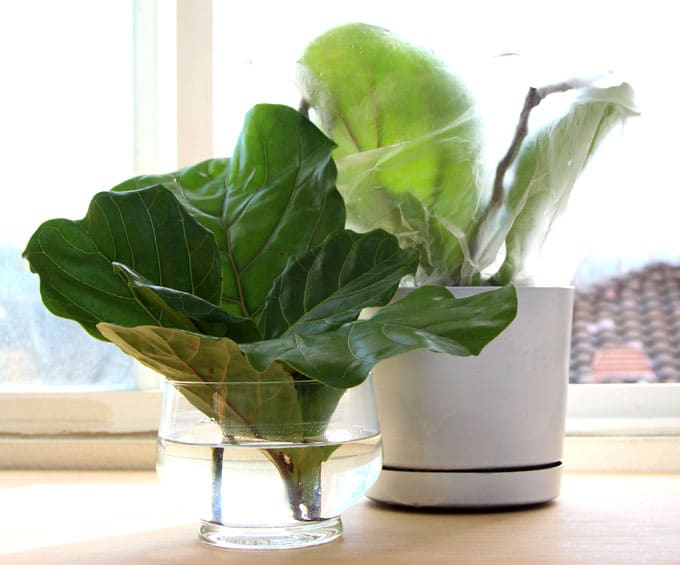
Because this is a tutorial, I carefully dug out a cutting planted in soil after 5 weeks to take a photo, although I was certain they have rooted!

See? Roots!
I couldn’t believe how easy it was to propagate Fiddle Leaf Fig! Now we have four gorgeous and healthy Fiddle Leaf Fig trees grow from cuttings!

At this point you can remove the plastic bag covering the 2 cuttings rooted in potting soil. Keep them well watered, especially at this early stage. Here are 5 best care tips for growing fiddle fig trees!
What happened to that leaf?
It also rooted!! It took an extra month longer, but what a miracle!
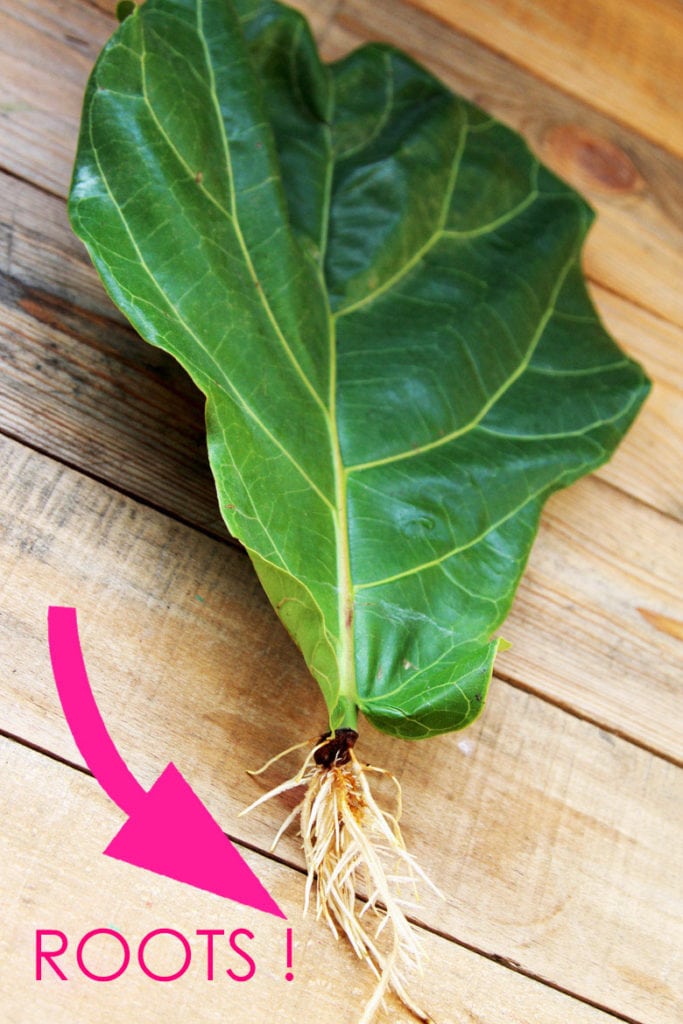
The single leaf cutting never grew bigger. During our temporary 6-month stay in a much colder city, we lost a few plants, and the leaf was one of them. Our reader suggested that the leaf should have a tiny piece of stem attached to it. This makes sense as most growth of new branches come from stem nodes.

However this would mean you will need a piece of branch. If you have any experience growing a Fiddle Fig tree from a single leaf, please DO share in the comments!
Summary and lessons learned :
- Cuttings rooted in water can grow as fast, maybe faster than cuttings rooted in soil.
- Single leaf cutting may not grow, or if it does, it will take much longer time, unless a tiny piece of stem is attached to it.
- Rooting hormone is not necessary, but can definitely speed up propagation in soil
- Keep the cuttings in warm temperature, this encourages root growth.
Check out our Fiddle Fig trees here for the one-year and four-year updates (you won’t believe it) , plus 5 best care tips!
You may also love: a collection of fool-proof indoor plants that also clean air, according to NASA studies!

Remember those African Violets grown from leaf cuttings here?


Both methods worked beautifully again!
Wouldn’t this tree look amazing with our wall mounted Staghorn Ferns??

Related: Another way to use this rooting method is to grow tomato plants from cuttings in just 1 week!
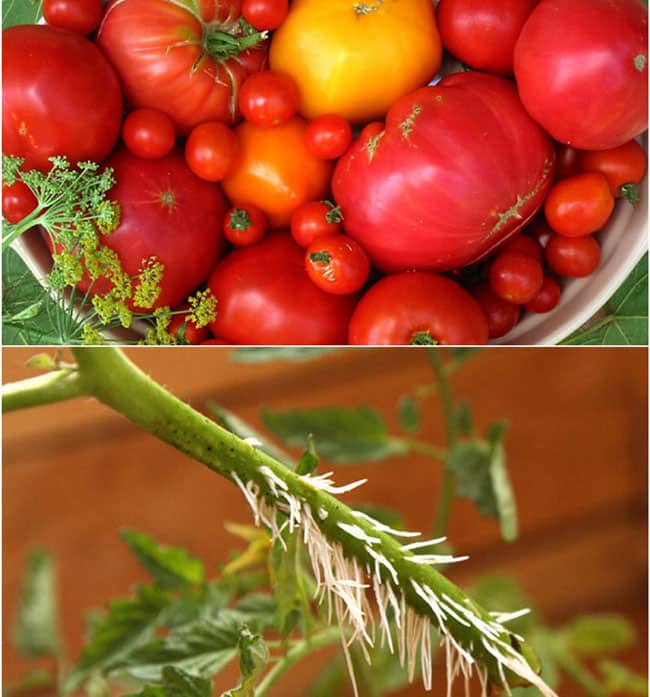
Happy growing! xo
Source: apieceofrainbow.com
